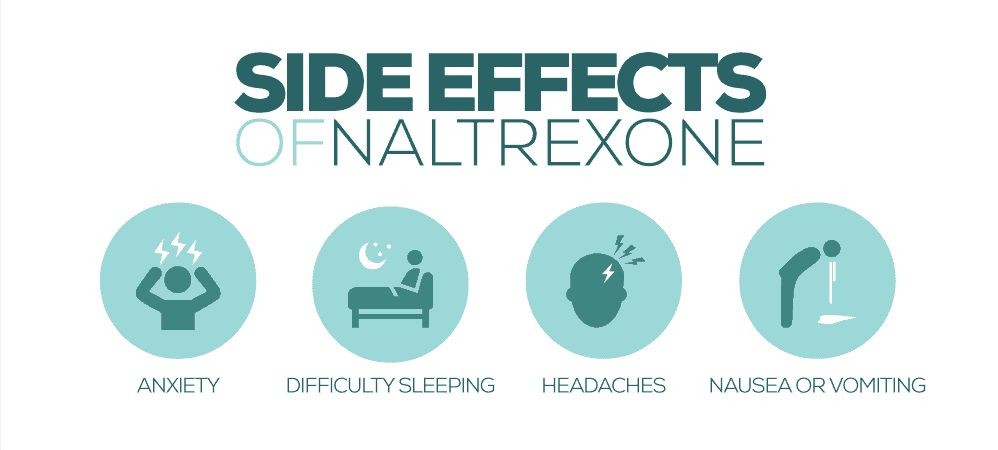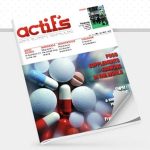
Contents
naltrexone
Naltrexone is administered after opioid or alcohol detoxification to prevent relapse. It helps reduce dependence and craving for opioids and alcohol by altering the brain’s effects on euphoria and pleasure.
Opioids are used for pain relief and also abused for euphoria. Alcohol is widely used for intoxication and euphoria. Naltrexone blocks reinforcement of euphoria and craving for these substances, helping in rehabilitation.
Naltrexone is an opioid antagonist that binds to opioid receptors in the central nervous system (CNS) and blocks their stimulation by natural or ingested opiates, and alcohol. Opioid receptors mediate the body’s response to most hormones and modulate pain, stress response, respiration, digestion, mood, and emotion.
Five different opioid receptors have been identified in humans including mu, delta, kappa, nociceptin and zeta receptors. Naltrexone binds with the greatest affinity to mu opioid receptors which are involved in euphoria, dependence, pain relief, and other physiological functions.
The FDA-approved uses of naltrexone are:
- Opioid dependence: Prevention of relapse after opioid detoxification. To be used only after patient has been opioid-free for 7-10 days and after negative naloxone challenge.
- Alcohol dependence: Treatment in patients who have been able to abstain from alcohol in outpatient settings before treatment initiation.
- Opioid-induced or non-opioid induced itching (pruritus)
- Autoimmune hepatitis
- Postherpetic neuralgia
- Crohn’s disease in children
Warnings
- Do not administer naltrexone to patients who:
- Are hypersensitive to naltrexone or any of its components
- Have acute hepatitis or liver failure
- Have current physiological opioid dependence
- Are receiving opioid analgesics
- Are in acute opioid withdrawal
- Have failed the naloxone test
- Are actively drinking
QUESTION
What are the side effects of naltrexone?
Common side effects of naltrexone include injection site reactions, such as induration, bruising, nodules, swelling, pain, tenderness, and itching. Less common side effects include liver damage, liver function abnormalities, liver inflammation, increase in blood pressure, ischemic stroke, cerebral aneurysm, chest pain, angina pectoris, myocardial infarction, cardiac failure, nonspecific ECG changes, palpitations, tachycardia, atrial fibrillation, difficulty breathing, dyspnea, pulmonary embolism, eosinophilic pneumonia, phlebitis, deep vein thrombosis, edema, lymphadenopathy, alopecia, opiate withdrawal symptoms, angioedema, anaphylaxis, abscess, cellulitis, hematoma, and necrosis.
Call your doctor immediately if you experience serious heart symptoms, severe headache, confusion, slurred speech, severe weakness, vomiting, loss of coordination, feeling unsteady, severe nervous system reaction, serious eye symptoms, or any other serious side effects.
This is not a complete list of all side effects or adverse reactions. Call your doctor for medical advice or report side effects to the FDA.
What are the dosages of naltrexone?
Tablet
Microspheres For IM Injection
Adult:
Opioid Dependence
- Oral: 25 mg initially, then 50 mg once daily starting on day 2
- Intramuscular (IM): 380 mg every 4 weeks for maintenance of abstinence
Alcohol Dependence
- Oral: 50 mg once daily for up to 12 weeks
- IM: 380 mg every 4 weeks for maintenance of abstinence
Overdose
- There is limited experience with naltrexone overdose. A small study conducted on healthy humans showed no serious or severe adverse events.
- The most common effects were injection site reactions, nausea, abdominal pain, somnolence, and dizziness.
- Naltrexone overdose may be treated with symptomatic and supportive care.
What drugs interact with naltrexone?
Inform your doctor of all medications you are currently taking. Naltrexone has no severe interactions with other drugs. Serious interactions include bremelanotide, naldemedine, naloxegol, acamprosate, apalutamide, dronabinol, lofexidine, and nabilone.
For more information on drug interactions, visit the RxList Drug Interaction Checker. Always tell your doctor about all medications you use.
Pregnancy and breastfeeding
- There are no adequate and well-controlled studies on the safety of naltrexone in pregnant women. It should be used during pregnancy only if benefits to the mother outweigh potential risks to the fetus.
- Naltrexone is excreted in breast milk. Decision should be taken to discontinue the drug or breastfeeding.
What else should I know about naltrexone?
- Naltrexone should not be administered until at least 7-10 days of abstinence from opioids.
- Naltrexone therapy can be initiated for alcohol dependence only after alcohol abstinence is achieved.
- After discontinuation of naltrexone, you may become more sensitive to opioids. Report any severe injection site reactions, liver inflammation, breathing difficulties, or low tissue oxygen saturation to your healthcare provider.
Summary
Naltrexone is a medication used to treat opioid use and alcohol use disorders in adults. It may cause depression and suicidal thoughts. Common side effects include injection site reactions, nausea, vomiting, diarrhea, abdominal pain, changes in appetite, headache, dizziness, fainting, insomnia, and drowsiness. Consult your doctor if pregnant or breastfeeding.


